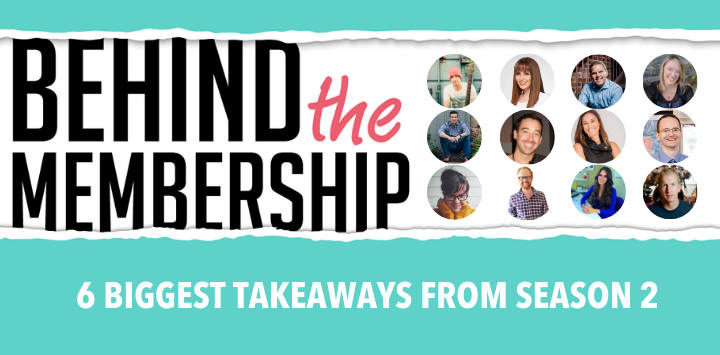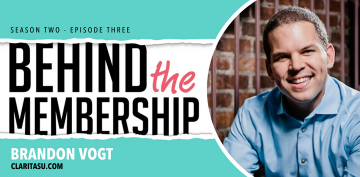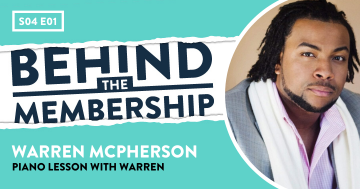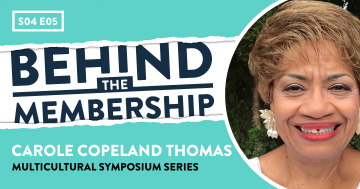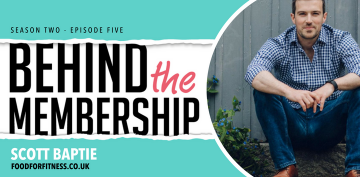The wait is almost over….
We’ve been counting down the days until the eagerly awaited 3rd season of the Behind the Membership podcast – and the good news is that it returns this week!
So, we thought a great way to prepare for another awesome season would be to take a look back at some of the biggest lessons and key takeaways that emerged from Season 2.
Now, if you’re brand new to the Behind the Membership podcast, then you’ve been missing out on something pretty special.
Each episode is a no nonsense, frank conversation with a different membership owner all about their journey so far. What’s working for them, what lessons they’ve learned, and the highs, lows and day to day realities of running their business.
It’s real stories about real memberships from real membership site owners!
Long time listeners will know that our guests come from a very wide range of different niches and styles of memberships. Some have been up and running for just a few months, others have been around for years. We cover a lot of territory!
However there are several underlying threads throughout the stories of all of our guests that I want to share with you here. Starting with…
“One-size-fits-all” and magic bullets don’t exist
There really is no “one size fits all” membership model and no magic bullet when it comes to getting and keeping members.
Almost everyone I have spoken to on Behind the Membership has a different model and approach to their membership site. Yes, there’s common factors between them, but there is no definitive model, no pricing structure that everyone was using, no marketing or retention technique that worked for everyone and that was the key to instantaneous success.
Each membership is unique, and so it stands to reason that the same approach won’t work for all.
I think what really highlighted this for me was Jared in Season 2 episode 12 and how he has this hugely successful membership site in Drumeo with 1000s of members, so he knows what he’s doing and he’s got a successful model already. But now he’s branched out and he’s got other membership sites in other markets, and he’s finding that what worked for Drumeo doesn’t necessarily translate.
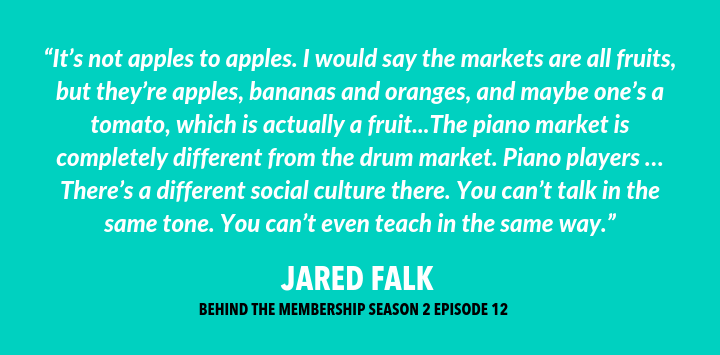
The audiences are different so the marketing needs to be different and the learning needs are different so the content needs to be different. So even with similar niches, you can’t just take this successful model from one site and replicate it for another and be guaranteed success.
Evolution is inevitable
We always say that memberships are ever evolving and this really bore out in the interviews, with nearly everyone I spoke with having a very different site today than the one they originally launched, and some such as Janet Murray and Terra Chandler even changing their niche slightly too.
For some this was just new features or actual site changes, but for others it was a real fundamental model change, like Scott Devine, whose membership site started out 6 years ago offering some simple backing tracks and notations to free content, then moved on to including courses and now has a huge faculty of other teachers who come in and create content for him on a weekly basis.
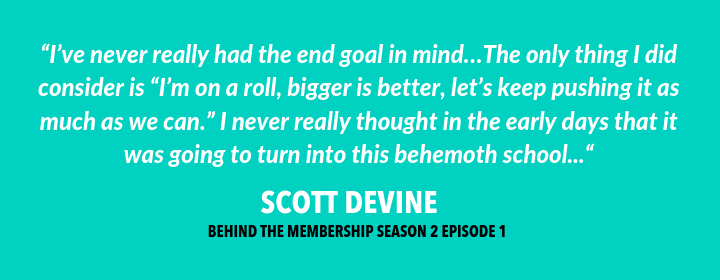
When you look at Scott’s site now it’s hugely impressive and he’s been incredibly successful with over 30,000 members. But I love that it started out so simply and expanded organically as Scott listened to what members wanted.
It’s so important that people realise that the membership you see today could be very different to the one that was there even just a year ago. You shouldn’t compare your early membership with someone else’s established site, but you can certainly use it as inspiration for where you want to end up!
Feedback is vital for success
The success of most membership sites often comes down to one simple thing: listening to what members actually want and need, and being willing to change your plan to accommodate that.
That’s not to say that you have to do everything your members suggest. But time and again the phrase “I listened to my members” came up in these conversations and I think that’s such an important thing to pay attention to.
You might have an idea and a plan and think something is great, but if your members, or your potential members, don’t like it, then it doesn’t matter.
You can’t be so set in your ideas and ways that you ignore valid and useful feedback.
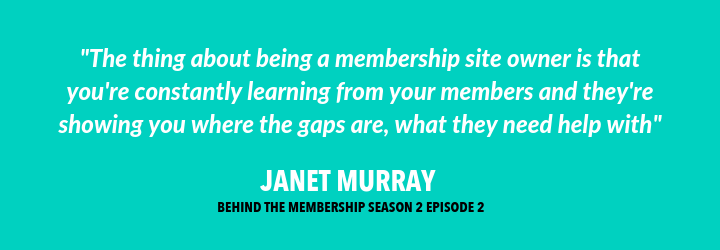
And that doesn’t have to be about big things like your content or features of your site. It could be simply realising that members aren’t sure how to use your site, or you’re not doing a good enough job at signposting ongoing value, or it could even be that your marketing just isn’t quite right so you’re not attracting the right people.
Listening to your members, and your potential members, will always give you great insight that you can use to improve your site.
The time your membership takes is up to you
One thing I found fascinating was the different amounts of time people are spending working on their membership. You have people like Scott Devine and Jared Falk who have big teams and offices and it really is a full time business operation, or really more of an empire.
For others like Nigel Moore, Mark Warner, Scott Baptie and Tim Topham the membership is a full time business but the team is a little leaner and it’s more about creating a good lifestyle and increased time freedom than creating a huge business.
Then you have people like Kim Jimenez, Janet Murray and Anissa Holmes who have different sides to their business and the membership is a key component, but not where most of their time is spent. In fact Janet actually mentions she only really spends one day a week on it, plus some added time in her community.
And then you have Brandon Vogt who has a full time job and runs his membership in his spare time, with very little help.
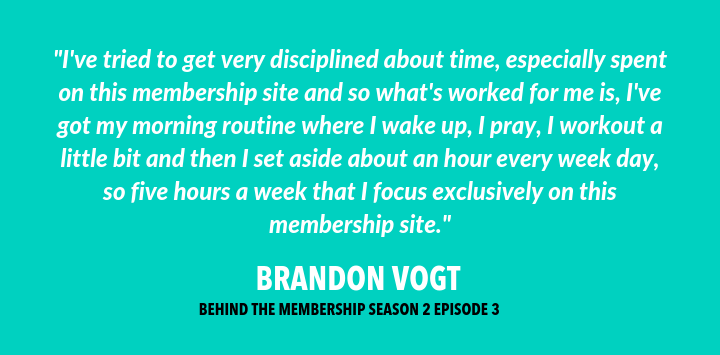
It really goes to show that you can make a membership site fit no matter what else you’re doing or the time available to you.
Whether a membership site is part time or full time doesn’t necessarily matter when it comes to your level of success either. Going back to Brandon for example: he has a six figure membership site even though he doesn’t have a lot of time to devote to it. He just ensures the time he does have is well spent.
Scaling can be challenging
Despite the differences between each of the memberships, the most consistent challenges that people had were marketing and scaling their memberships.
There were a lot of different marketing strategies talked about, from the closed door approach to trials and challenges to summits, and again it just goes to show there’s no one size fits all and that actually you need to test and try a few different things to find the right approach for you.
It can be a challenge to find the right approach to attracting new members, but once you do your membership will thrive.

Scaling a membership presents its own unique challenges: How do you grow without burning out? When should you start hiring and who? How do you keep churn low at higher member numbers?
I found it telling that the top advice that many of my guests offered, such as Tim Topham, Mark Warner and Anissa Holmes, was just how important starting a team was and how they wish they had done it sooner.
Price doesn’t determine success
I deliberately aim to not make this podcast about how much money people are making, because I don’t think that’s the only benchmark for measuring membership success. However 3 of my guests in season 2 are already making 7 figures with their membership, and the majority of the others 6 figures (the only exceptions actually being those that are a still in the first 18 months)
As we’ve already mentioned, these are all different membership models being used, different marketing strategies, different time being given to the membership and so on. So you really can have success on your own terms – whether you measure that in money or time or just pure enjoyment of what you’re doing.
But what I want to highlight more than that end result is the cost of these memberships. So often these days everything is about “charging a premium’” and “high ticket products” and sure, some of my guests are doing that. But the majority aren’t. The majority of the people I talked with are charging less than $40 a month. But they’re still making 6 and 7 figures.
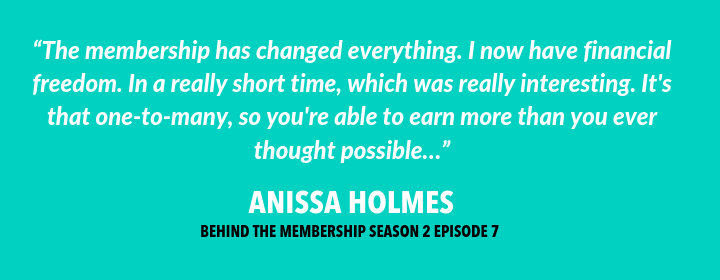
You absolutely can have a successful business and a good income with a membership model. And you can create it in such a way that you have more freedom and flexibility too. Which is really the main reason that most of my guests started their memberships in the first place.
